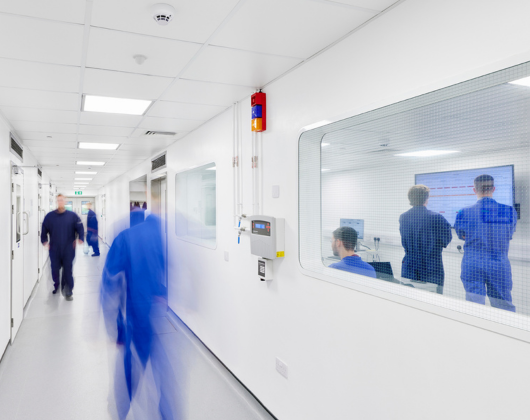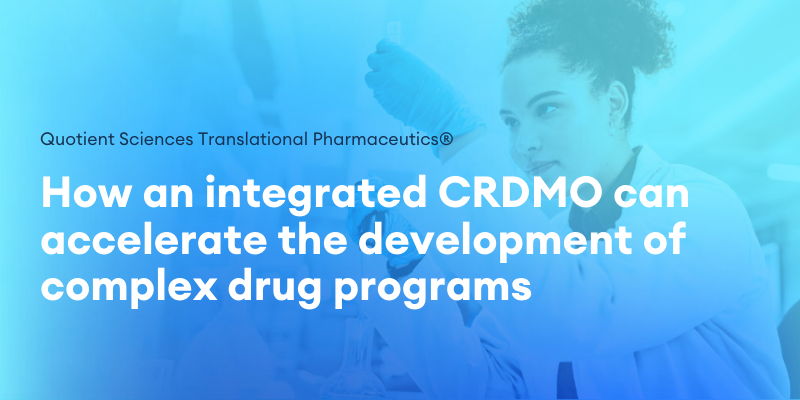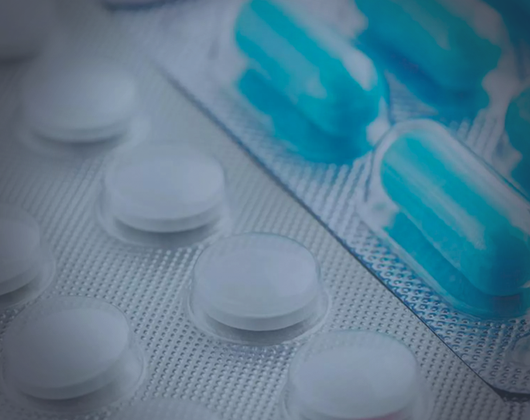In its broadest sense, the need to reformulate can occur at any stage in the product development lifecycle. This could range from small changes to the formulation, to improve processability for example, to more significant changes, such as changes to the dosage strength. Furthermore, the need for an entirely different formulation may be identified. Examples could include switching to a different drug product to ensure suitability for the development phase of a new drug, generation of age-appropriate formulations for patients, or as part of the lifecycle management strategy for a product, such as the development of a modified-release (MR) formulation to reduce dosing frequency.
However, the success of a reformulation is dependent on scientific expertise, the right technology, availability of appropriate models for formulation testing, and a lot of strategic planning.
The general industry trend towards outsourcing to specialist contract organizations has further complicated this challenge. These specialist organizations are invariably reflective of the functional silos that exist in traditional pharma, offering the strong capability, experience, and infrastructure required in their field. However, their specialism also means that multiple providers are required to deliver each drug development activity, each of whom must play their part in total alignment with all other contributors. Naturally, issues occur along the way and development timelines are impacted. This all points to a need for an integrated service provider with all these capabilities in-house who can streamline the outsourcing model and improve the likelihood of success for a reformulated product.
What sort of reformulation might be required and when?
Early development
In early development, relatively simple, fit-for-purpose formulations are frequently employed to expedite entry into clinical development, and the efficacious dose may not be known until after dosing to healthy volunteers and the pharmacokinetics (PK) in humans is known. Such early formulations may therefore be designed to provide some dose flexibility and may also require dosing of multiple dosage units in the first-in-human (FIH) studies to define the target dose for later-stage studies. Once all of this is known, the product may need to be reformulated in order to deliver the required dose in as few dosage units as possible for proof-of-concept (POC) studies.
Furthermore, at this stage of development, relatively little will be known about the relationship between the formulation and the critical quality attributes (CQAs) of the drug product. As more is learned as the product advances through development, optimization of the formulation may be required. For example, incompatibilities with or degradation of the active pharmaceutical ingredient (API) during long-term storage might be identified, requiring modification of the levels of particular excipients or their substitution. This might also be required for product launches in different territories due to differing regulatory requirements or stability challenges in different climatic zones. Whatever the reason, an in-depth understanding of the issue at hand is required to justify the need to reformulate and the appropriate strategy to employ. Depending on the extent of the changes to the formulation, bridging clinical studies may be required to understand the impact, if any, on the bioavailability and PK of the API.
At Quotient Sciences, we take an integrated approach to reformulation projects in the early development stage. Our unique platform, Translational Pharmaceutics®, enables us to fully integrate drug substance, drug product, and clinical testing, all under one organization and a single program manager, breaking down traditional industry silos to accelerate molecules through development. Real human data is used to drive formulation decision-making and technology selection, which greatly increases the likelihood of downstream clinical success. This seamless integration of activities allows for closely aligned workflows that efficiently conserve API consumption, reduce overall development risk and costs, and fast-track molecules from candidate development to FIH and onward to Good Manufacturing Practice (GMP) drug products for POC studies.
Late development
In late-stage development, a complete reformulation of an API is usually only justified if there are significant issues with the formulation’s performance in manufacturing (e.g. on scale-up), prior to use (e.g. stability), or in use (e.g. performance). An exception to this, however, might be where there have been significant changes to the target product profile (TPP). This could occur, for example, following end-user feedback on the current drug product, the targeting of a new indication with a different patient demographic (e.g. pediatric population or 505(b)(2)), or as part of the product lifecycle management strategy. In this situation, there could be a switch to a totally different product format or route of delivery and/or require the use of an alternative formulation technology. While the changes made to the formulation could be significant, learnings from the previous formulation development program are invaluable in informing development and key performance targets (e.g. PK parameter targets) to give a head start to the development program.
Depending on the formulation technology employed, “critical-to-performance” formulation variables may be identified, such as the levels of a functional excipient. As the precise level of such a formulation variable required to achieve the desired performance may not be known, to maximize the chances of success of the program, formulators can employ a “formulation design space”. This involves bracketing formulations within the design space by generating supportive batch analysis and stability data at the extremes of the design space. Obtaining regulatory approval for the design space enables the development team to dose any formulation within the design space and make formulation modifications in response to the arising clinical data until the performance targets are met. This approach requires tight integration of the chemistry, manufacturing, and controls (CMC) teams with their counterparts in drug metabolism and pharmacokinetics (DMPK), regulatory, quality assurance (QA), and clinical to align around the formulation to be dosed once in the clinic, but it can save significant time by maximizing the chances that the new formulation hits the required targets.
In the later stages of development, our Translational Pharmaceutics platform can be applied to integrate formulation development, real-time adaptive GMP manufacturing, and clinical testing activities. Flexible study protocols and rapid “make-test” cycles enable the development and optimization of formulations in real time based on clinical data. This approach can be used to evaluate and select solubilization technologies, optimize MR systems, develop pediatric dosage forms, and change routes of delivery. As part of regulatory submissions, we obtain approval to make formulation adjustments within a mapped design space. This means that any formulation within certain defined parameters can be rapidly made and tested to determine the impact on the drug release rate and PK profile, enabling us to efficiently identify the optimal formulation without the need for regulatory amendments. This greatly reduces development risks, maximizes the probability of commercial success, and saves time and costs.
Case study 1: Enhancing drug solubility before Phase II
BOS172767, a Biopharmaceutics Classification System (BCS) class II molecule, was being developed by Boston Pharmaceuticals for the treatment of autoimmune diseases. The FIH study showed poor oral bioavailability and a significant food effect, which prevented the project from advancing into patient studies. An enhanced formulation was required to help overcome these challenges and to identify a formulation suitable for long-term clinical development.
At Quotient Sciences, using Translational Pharmaceutics, three solubility-enhancement platforms were developed and rapidly screened in the clinic, including a micronized form of the API, a self-emulsified lipid delivery system, and a spray-dried dispersion. The drug products were produced at a small scale for quick POC assessment without the need to conduct larger-scale, cost-prohibitive process development and lengthy stability programs for multiple technologies. The human PK study used a five-period cross-over design in 16 healthy volunteers.
The micronized formulation delivered the best human PK outcome, which enabled the sponsor to advance with a simpler and cheaper technology into larger-scale clinical development. The overall timeline from initiating formulation laboratory work to receiving clinical PK data was 6 months.
Case study 2: Development of an optimized MR tablet formulation for initial POC trials
SLx-2101, a novel phosphodiesterase-5 (PDE-5) inhibitor, was being developed by Surface Logix as an antihypertensive agent. Data from early development studies with an immediate-release tablet formulation determined that an MR formulation was needed to reduce Cmax-related adverse events and ensure the 24-hour PK profile remained within the therapeutic window to achieve a once-daily treatment regime.
At Quotient Sciences, using Translational Pharmaceutics, hydroxypropyl methylcellulose (HPMC)-based matrix MR tablets were developed for assessment in an adaptive relative bioavailability Phase I study to optimize the MR tablet formulation based on human clinical data. A two-dimensional formulation design space was established, covering dose strengths between 10 and 20 mg and sustained drug release durations between approximately 12 and 20 hours. Representative formulations at the extremes and mid-points of the design space were manufactured and characterized to demonstrate that the performance of the formulation can be controlled by varying the drug loading and HPMC content in the formulation. The formulation design space was submitted as part of a Clinical Trial Application (CTA) and approved for clinical investigation.
The clinical study was a five-period sequential design with interim data reviews between each dosing period to allow iterative investigation of the design space and identification of the optimal drug product composition. The formulation design space allowed a wide range of formulation compositions to be evaluated in response to emerging clinical data, with the optimal MR formulation identified in 7 months.
Summary
In summary, reformulation may be required at any stage in the drug development lifecycle. Successful reformulation is dependent on many factors and can be difficult to achieve within traditional industry silos. At Quotient Sciences, through our Translational Pharmaceutics platform, we possess the expertise and capabilities needed to reformulate products for clinical and commercial success. By taking a unique, integrated approach that is tailored to each program, we provide optimal results for our customers in the most efficient and cost-effective manner, getting new medicines to patients faster.
Get more information about our fully integrated Translational Pharmaceutics platform.










